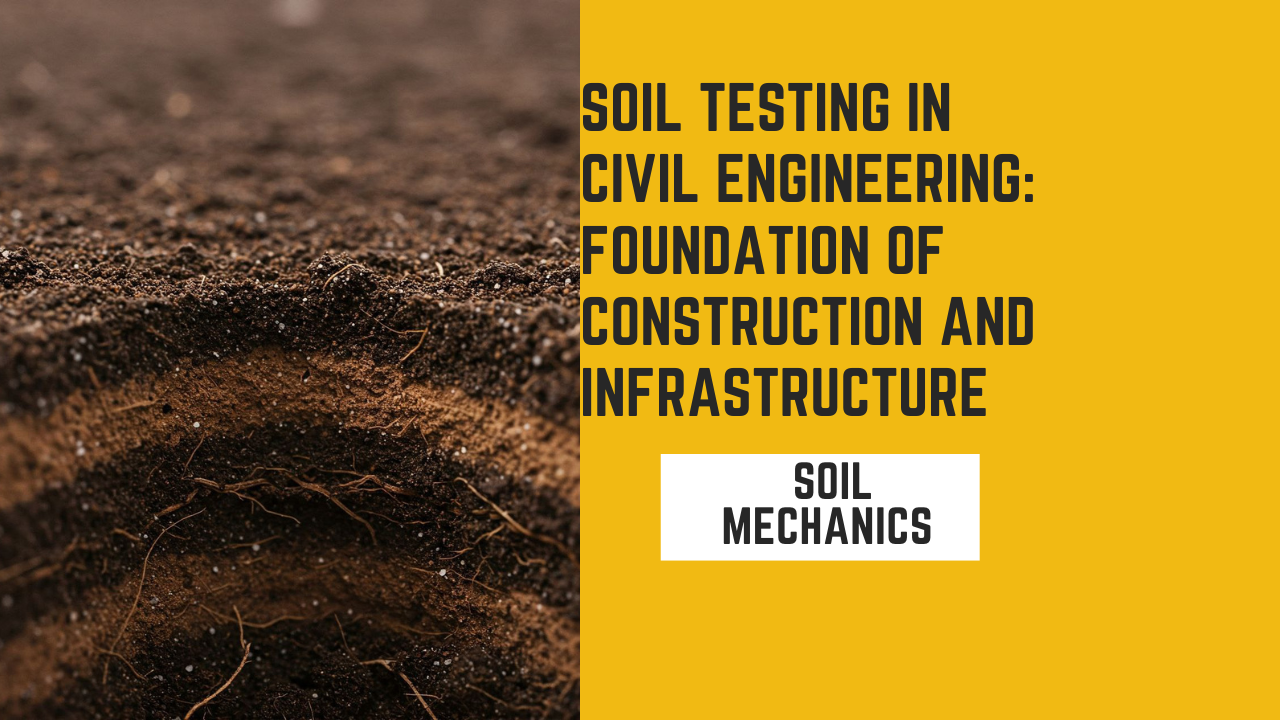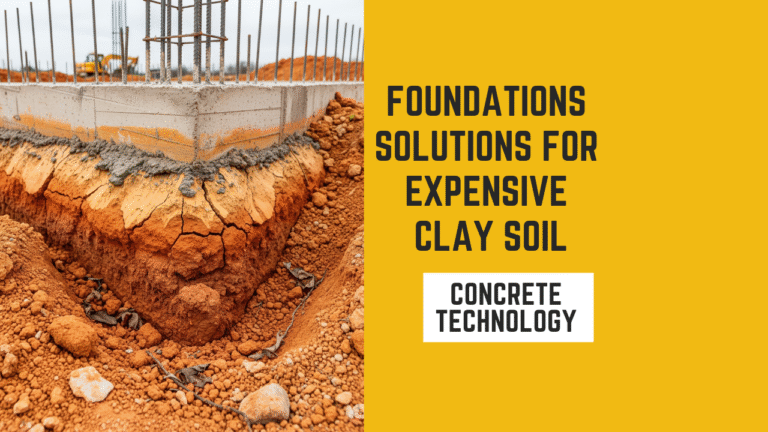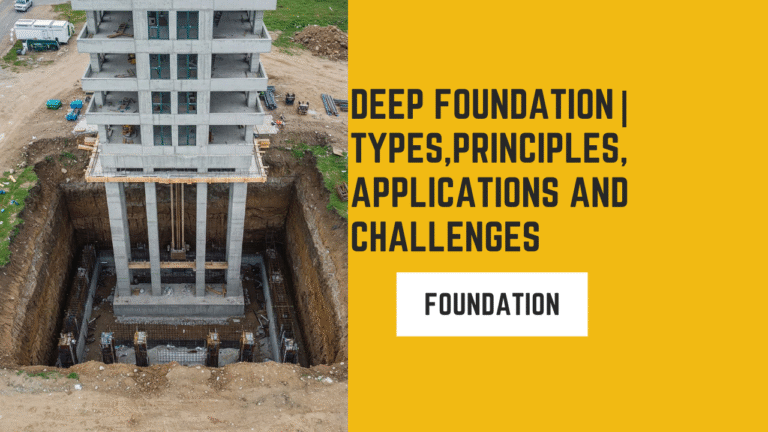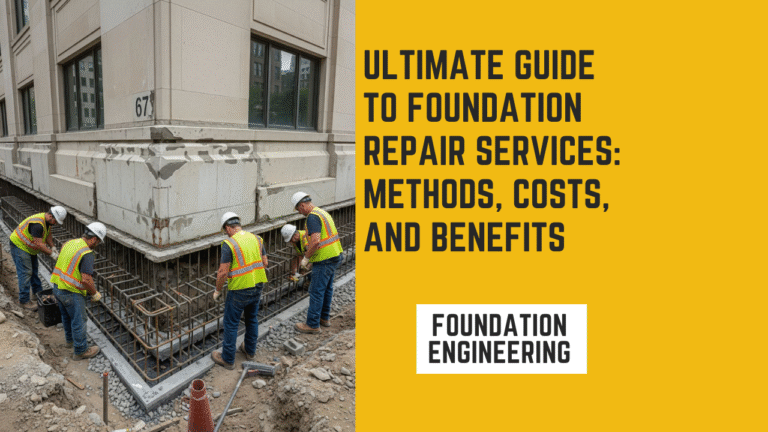Soil Testing in Civil Engineering: Foundation of Construction

Introduction
Soil testing or geotechnical investigation is perhaps the most significant process in civil engineering. This is the process of investigating the soil conditions in order to enable construction works to be erected over firm, stable, and durable soil. The failure to carry out suitable soil test means even well-designed constructions can be subjected to collapse with disastrous effects.
In this comprehensive article, we discuss the significance of soil test in civil engineering, types, procedure, equipment, challenges, and technological advancements. After reading this in-depth report, you’ll appreciate more how soil testing holds the secret to the success of construction and infrastructure projects.The Importance of Soil Testing in Civil Engineering
Soil is a natural, heterogeneous material upon which nearly all construction projects are founded. Its behavior must be understood so as to furnish support for building safety, stability, and performance. The aims of soil testing in civil engineering include:
Load-Bearing Capacity Assessment: Determines the soil’s ability to bear the load of a structure without excessive settlement or failure.
Foundation Design: Provides data for selecting the appropriate type of foundation—whether shallow (e.g., spread footing) or deep (e.g., piles).
Soil Stability Analysis: Identifies risks such as landslides or soil erosion that may compromise construction.
Drainage and Permeability: Assesses water flow within the soil to prevent problems like waterlogging or foundation weakening.
Environmental Safety: Ensures that soil contamination or pollutants won’t affect construction or human health.
Through soil testing, engineers mitigate potential risks, optimize costs, and ensure adherence to safety standards and regulations.
Properties Analyzed in Soil Testing
Soil testing involves the study of several physical, chemical, and mechanical properties, including:
Shear Strength: Measures the soil’s resistance to sliding or deformation under external forces.
Compaction: Determines the soil’s ability to be compressed and its maximum density, which is crucial for construction stability.
Moisture Content: Indicates the amount of water present in the soil, affecting its behavior under load.
Atterberg Limits: Classifies soil based on its plasticity and consistency, helping engineers determine its usability.
Permeability: Evaluates the soil’s ability to allow water to flow through it, impacting drainage systems.
Grain Size Distribution: Analyzes the proportions of sand, silt, and clay, which influence texture, strength, and compaction.
By understanding these properties, engineers can customize construction techniques and materials to suit specific project requirements.
Types of Soil Testing in Civil Engineering
Several tests are performed to examine soil characteristics, often categorized into field and laboratory tests. Here’s an overview of the most common types:
Field Tests
Standard Penetration Test (SPT):
Measures soil resistance by driving a split-barrel sampler into the ground.
Provides data for estimating soil density and bearing capacity.
Plate Load Test:
Evaluates load-bearing capacity and settlement characteristics by applying pressure to a steel plate on the soil.
Cone Penetration Test (CPT):
Uses a cone-shaped probe to measure soil resistance and stratigraphy without extracting samples.
In-Situ Shear Test:
Assesses soil shear strength directly in the field, especially in large construction sites or landslide-prone areas.
Percolation Test:
Determines water drainage rates, critical for designing septic systems or managing stormwater.
Laboratory soil Test
Moisture Content Test:
Measures water content by drying a soil sample and comparing weights before and after.
Compaction Test (Proctor Test):
Determines optimum moisture content and maximum dry density for effective soil compaction.
Atterberg Limits Test:
Includes liquid limit, plastic limit, and shrinkage limit tests to classify soil types and their plasticity.
Triaxial Shear Test:
Assesses shear strength, critical for understanding soil stability under varied stress conditions.
Consolidation Test:
Examines soil settlement characteristics under sustained loads, helping design long-term stable foundations.
Soil Testing Process
Soil testing in civil engineering follows a systematic process to ensure accuracy and reliability. Below is a step-by-step outline:
Site Investigation:
Engineers conduct an initial survey to identify soil conditions, subsurface layers, and potential challenges.
Sample Collection:
Soil samples are collected from the site using techniques like boring or drilling at varying depths, typically at foundation levels.
Laboratory Analysis:
Collected samples undergo rigorous testing in controlled environments to determine their physical, chemical, and mechanical properties.
Data Interpretation:
Engineers analyze test results to understand soil behavior and its suitability for the proposed construction.
Reporting and Recommendations:
A detailed report is generated, including findings, risk analysis, and recommendations for foundation design and construction strategies.
Equipment Used in Soil Testing
Modern soil testing involves advanced equipment that enhances accuracy and efficiency. Some commonly used tools include:
Augers: Used for boring and collecting soil samples.
Compaction Meters: Measure the degree of soil compaction in the field.
Penetrometers: Evaluate soil penetration resistance, often in CPT and SPT tests.
Atterberg Limit Devices: Includes Casagrande tools and plastic limit rollers.
Geotechnical Software: Simulates soil behavior under various conditions, aiding in complex analysis.
Equipment choice depends on the type of test and specific project needs.
Challenges in Soil Testing
Soil testing is not without its challenges, which include:
Soil Variability:
Soil properties can vary drastically over short distances, requiring multiple tests and samples.
Environmental Conditions:
Rain, temperature changes, and groundwater can alter soil characteristics during field testing.
Cost and Time:
Comprehensive soil testing can be expensive and time-consuming, particularly for large-scale projects.
Human Error:
Errors in sample collection, handling, or testing procedures can lead to inaccurate results.
Limitations of Tests:
Some tests provide indirect data or are influenced by assumptions, necessitating careful interpretation.
Addressing these challenges requires skilled engineers, proper planning, and adherence to standards.
Technological Advancements in Soil Testing
Innovations in geotechnical engineering are transforming soil testing practices. Notable advancements include:
Remote Sensing and GIS:
Satellite imagery and Geographic Information Systems (GIS) allow large-scale mapping of soil conditions without extensive fieldwork.
Digital Sensors:
Sensors installed on-site monitor soil properties like moisture, temperature, and pressure in real time.
Artificial Intelligence (AI):
AI algorithms analyze complex soil data, providing predictive models for long-term behavior.
Drones for Soil Surveys:
Unmanned aerial vehicles (UAVs) facilitate quick and accurate surveys of large areas, reducing manual labor.
These technologies improve efficiency, accuracy, and cost-effectiveness, making soil testing more accessible.
Conclusion
Soil testing is the foundation of civil engineering since it allows engineers to safely design and build strong and sustainable structures. By assessing the properties of soil through field and laboratory tests, engineers can make foundations strong and risks negligible.
Despite all its difficulties, technological and methodological advances are improving the accuracy and range of soil testing. As demand for infrastructure increases with environmental issues, soil testing will be at the forefront of creating our built environment.
Learning the art and science of soil testing not only reveals its significance in engineering but also its role in the safety and advancement of contemporary society.
Would you like more information on any particular soil testing technique or technology?
Soil is an unpredictable natural substance on which almost all construction rests. Its properties must be understood for safety, stability, and performance of buildings. The aim of soil testing in civil engineering is:






